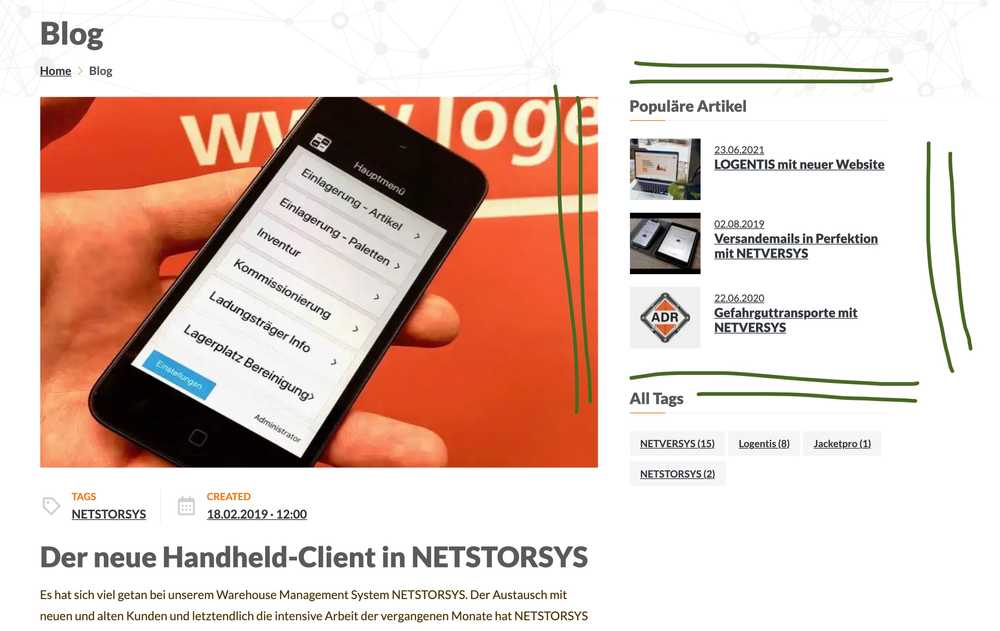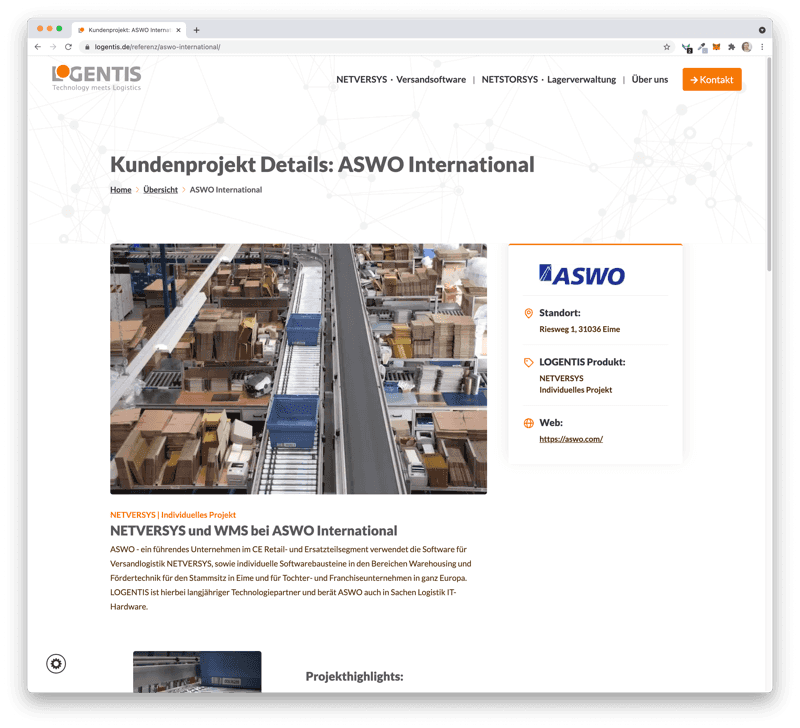okaycloud successfully relaunched new LOGENTIS website
After several weeks of project work, okaycloud released the new version of the LOGENTIS website end of June. The project contained a lot of facets, which i will outline in the next sections of this blog. The customer is happy, which makes us happy too of course. Even though we launched that thing, it's still a work in progress because we have quite some challenges on the horizons when it comes to content. So what have we done:
Jamstack powered
This site is a web optimized single page application (SPA) created with GatsbyJS. We used a lot of great plugins, which makes Gatsby a really good choice for advanced, SEO friendy, web projects. On top of that, we used NetlifyCMS as the underlying system for content management. The build pipeline and hosting is done via Netlify. This is where also the cloud functions are hosted. We really like to create projects with a limited number of cloud providers, because as you plug in more and more vendors, things tend to get more complex.
Content is king
This website release has a big focus on content and easy creation and sharing of content. This means that every page has meaningful OG tags for quickly sharing URLs on social media with very crisp headline images. When it's not easy to share content, people tend to not do it at all. We made content structures for our main publicist areas like:
Logistics Wiki
We just started to explain words and phrases in the logistics space where LOGENTIS is involved with its products. But take for granted, as of now, it's not very comprehensive to say the least. To work on that area is clearly on our roadmap, but the start is made.
Carrier Informations
We create pages for every distribution carrier LOGENTIS supports in their products. This is really useful to see what services are available in the software products. Furthermore, you can see relevant things like tracktrace URL or hotline numbers.
The Blog (with Analytics connection)
Of course there is a blog on the site which should get more love in the coming weeks. We really tell each and every customer that there is a responsibility to create content for a blog because if you don't, the appearance of the website is worse than not having a blog at all. The nice thing we put into the blog previews, which are spread across the site, is the connection to Google Analytics. This way we can show the most views blog articles and create sections like these ("Populäre Artikel" means popular articles).
Shortnews
For shorter pieces of information, we created a shortnews section in the CMS, which is part of the main page of the site.
Customer Projects
LOGENTIS can create customer success stories with the help of the CMS. We created a nice content structure for that piece of information. Upon finishing a success story, the story will get put into a stories list together with a detailed view of the customer story. See a real world example below.
Jobs
We created a job content structure so that LOGENTIS easily create job offerings and show them on their jobs page.
SEO and Analytics
As written earlier, this project is not done yet and will never be. Our goal is to make the site more visible by leveraging several methods. This means we need to constantly monitor how well our target keywords rank, how good the content is aligned to our keywords and our target audience and keep an eye on the competitors. So basically, actions like these are part of our weekly routines:
- Monitor the previously researched competitors
- Monitor and adjust content based on keyword rankings
- onPage optimization when it comes to Google Feature Snippets
- Apply Growth Hacking techniques to grow by without increasing ad spent
Content Strategy
Since the blog was the unloved child in the last years, we started writing a content strategy for various parts of the website. With the primary focus on the blog, we will produce content on a defined schedule and, even more important, have responsible stakeholders for the task. History proves again and again that not having at least one employee being responsible means, no one is going to do the content work. Just saying "hey team, please do a blog article once in a month and you can decide on your own who is doing it" simply doesn't work.
Conclusion
We did the first step with the relaunch, but if a company is really interested in increasing various KPIs, the project won't be over at any point in time. The only thing which requires less workload is the technical implementation, but for most other things, the work has just begun. Remember, it's a marathon, not a sprint.








